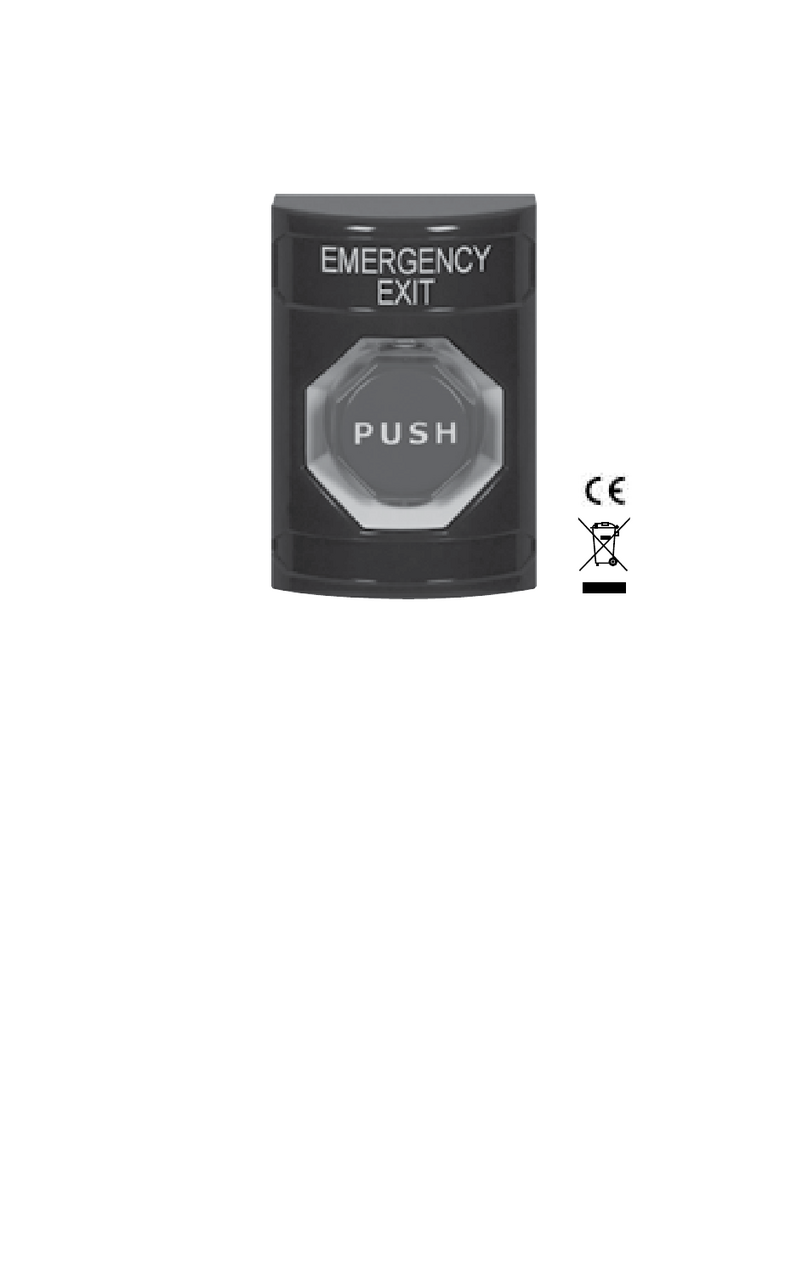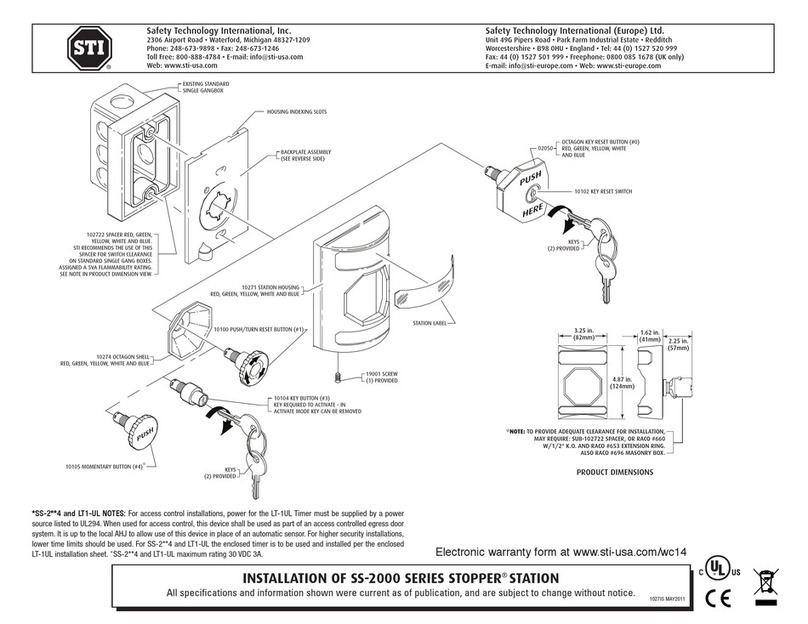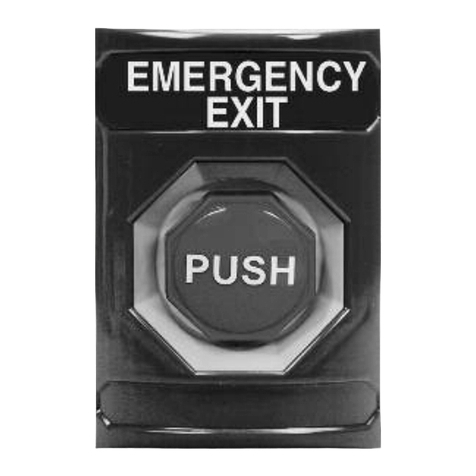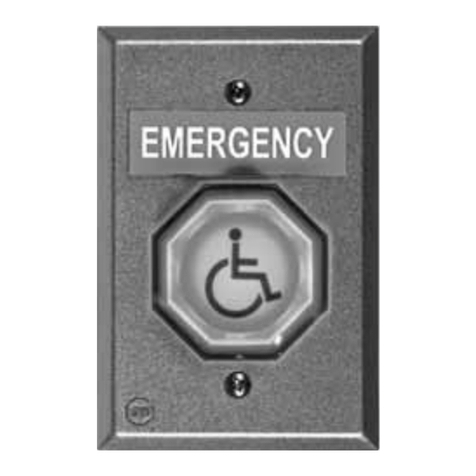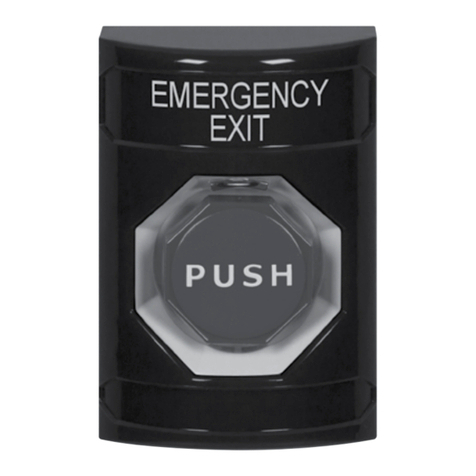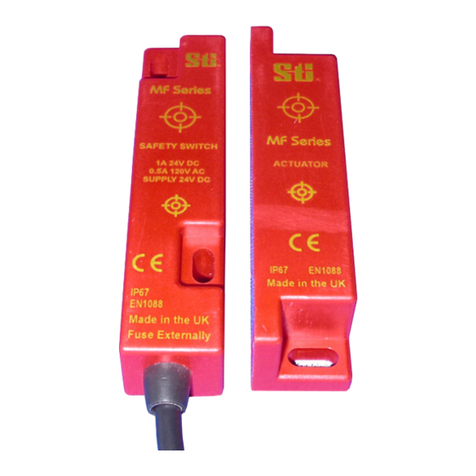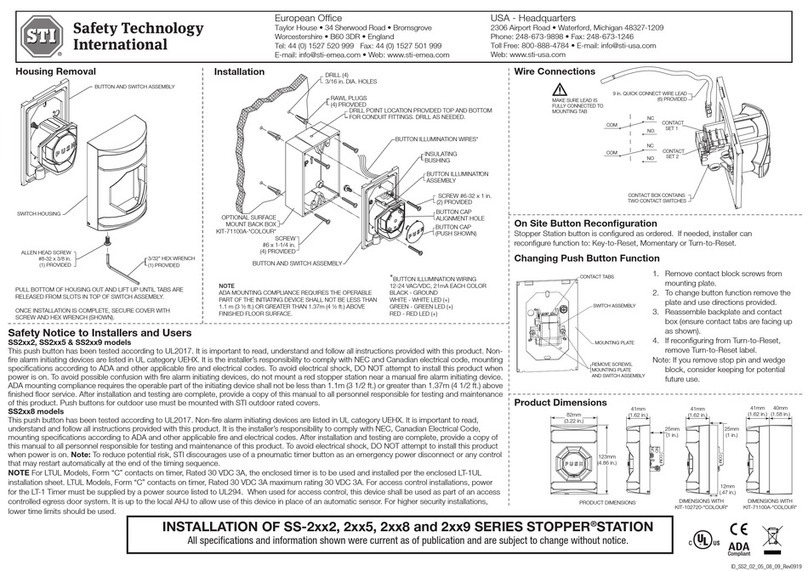Read and understand these instructions before installing operating or maintaining this equipment.
The product is designed to be a component of a customized safety oriented control system. It is the responsibility of the user to ensure the correct overall functionality of its systems and
machines. Omron STI, its subsidiaries and affiliates, are not in a position to guarantee all of the characteristics of a given system or product not designed by Omron STI.
APPLICATION:
RFID oded Non- ontact Safety Switches are designed to interlock hinged, sliding or removable guard doors. They are specifically advantageous when:
a) poor guard alignment exists
b) high level anti-tamper is required
c) high hygiene requirements exist e.g. food industry hose down
d) long mechanical life is required (no moving or touching parts)
When used in combination with a Dual hannel Safety ontrol Device, RFID oded Non- ontact Safety Switches can be used to provide protection up to ategory 4 and PLe to ISO13849-1.
OPERATION:
All RFID oded Non- ontact Safety Switches are designed to conform to EN60947-5-3 and be used as directed by ISO14119 and EN ISO12100.
They have coded RFID and magnetic sensing which provides a wide (>10mm) sensing distance and provides a high tolerance to misalignment after sensing. They can operate in extreme
environments of temperature and moisture. The switches are provided factory coded either uniquely (U types) or by a basic code (B types). For U types the individual code numbers are
shown on the reverse of switch / actuator. For B types (basic code) any actuator will operate any switch.
If a Basic B type actuator is to be changed then a re-teach process is needed. Power down – place new actuator to switch – Power up.
IMPORTANT:
Record any RFID codes as required by factory rules or with reference to any risk assessment for the particular application.
The Risk Assessment for the particular application should include the risk of spare actuators. Spare actuators should not be readily available and must be securely controlled.
The safety functions and mechanics must be tested regularly. For applications were infrequent guard access is foreseeable, the system must have a manual function test to detect a possible
accumulation of faults. At least once per month for PLe at3/4 or once per year for PLd at3 (ISO13849-1). Where possible it is recommended that the control system of the machine
demands and monitors these tests, and stops or prevents the machine from starting if the test is not done. (See ISO14119).
INSTALLATION:
Installation of all RFID oded Non- ontact Safety Switches must be in accordance with a risk assessment for the individual application.
The use of a Safety Relay or ontrol Device is required for monitoring RFID oded switches. These devices monitor 2 redundant circuits as per ISO13849-1 for up to PLe / ategory 4
protection.
M4 mounting bolts must be used to fix the switches. Tightening torque for mounting bolts to ensure reliable fixing is 1.0 Nm. Always mount on Non Ferrous materials.
The recommended setting gap is 5mm. The Safety Switch must not be used as a mechanical stop or be adjusted by striking with a hammer.
The actuator must not be allowed to strike the switch. Do not mount adjacent switches or actuators closer than 100mm.
Typical misalignment tolerance after setting is 5mm.
After installation always check each switch function by opening and closing each guard individually in turn and ensuring that the Green LED on the switch and the LEDs on the Safety Relay
are illuminated when the switch is closed and are extinguished when the switch is open. heck that the machine stops and cannot be re-started when each switch is open.
WARNINGS:
The Risk Assessment for the particular application should include the risk of spare actuators. Spare actuators should not be readily available and must be securely controlled.
The safety functions and mechanics must be tested regularly. For applications were infrequent guard access is foreseeable, the system must have a manual function test to detect a
possible accumulation of faults. At least once per month for PLe at3/4 or once per year for PLd at3 (ISO13849-1). Where possible it is recommended that the control system of the
machine demands and monitors these tests, and stops or prevents the machine from starting if the test is not done. (See ISO14119).
